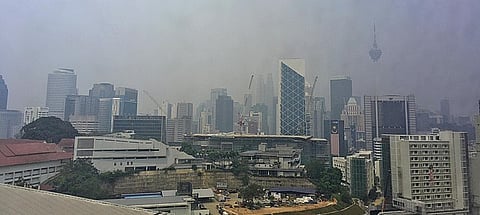The most severe transboundary haze crisis in five years is likely in three Southeast Asian countries due to El Niño, a weather pattern caused by the warming of sea-surface temperatures in the Pacific Ocean that brings hotter and drier weather, a report by a Singapore-based think-tank said.
This year’s heatwave will be a stress test for cooperation between governments and the private sector, according to the Haze Outlook 2023, published Wednesday by the Singapore Institute of International Affairs (SIIA).
It designated a “red” rating for haze, indicating the most severe of the three levels of risk for the first time since the outlook – which analyzes the risk of a severe transboundary haze crisis affecting Indonesia, Malaysia and Singapore, and the surrounding region – began five years ago.
However, it did not include the Lower Mekong region of Myanmar, Thailand and Laos, which were hit hard by an extreme haze crisis earlier this year primarily due to wildfires and agricultural waste burning.
“Forest and land fires and the resulting heavy haze pollution across our region have been a recurring problem since 1997,” Simon Tay, the institute’s chairman, said in the report, though the skies “have remained relatively haze-free for the past three years” in Singapore, Malaysia, and Indonesia.
“This has been due to a combination of effective policy and action by the Indonesian government and larger corporations, and also unusually wet weather, which has made it easier to keep fires in check,” he said.
“However, there is a real risk in the year ahead that the situation will change, and for the worse. If there is severe dry weather resulting from El Niño, there is a danger that severe transboundary haze will impact us,” Tay said, adding that the region faces “a time of stress testing.”


